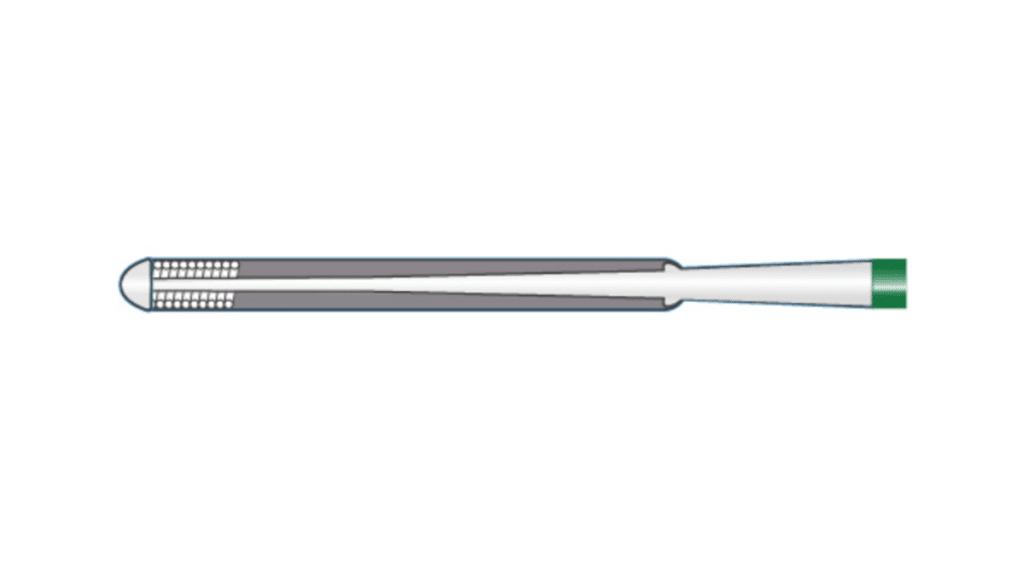PTCA guide wires run devices across convoluted coronary anatomies, which is important to coronary procedures. Their performance depends on tip flexibility, torque control, support, and lubricity. The correct guide wire is necessary to treat severe calcifications, tortuosity, or chronic total occlusions. Synchronizing guide wire properties to PTCA procedure requirements increases the device’s delivery, safety, and success.
Overview of PTCA Guide Wires
PTCA Guide Wires in Coronary Navigation
PTCA guide wires are tools in percutaneous transluminal coronary angioplasty to go through the coronary artery stenosis or occlusions to the distal end of the vessel and provide a pathway for balloon dilatation catheters, stents, and microcatheters to access the vascular area.
They are the primary conduit to access occluded or stenotic coronary arteries with support for balloon catheters or stents. The goal is to traverse challenging lesions with less vessel trauma. PTCA guide wires help attain procedural success in tortuous, calcified, or CTO segments for navigational accuracy and tactile feedback.
(1) Key Components
PTCA guide wires integrate core materials, special coatings, and precision tip designs for performance. Core materials, including nitinol and stainless steel, provide flexibility, support, and torque transmission. E.g., nitinol keeps shaping memory in tortuous vessels. Stainless steel offers pushability and steerability. Hydrophilic polymer coatings decrease friction for lesion crossing in tight spaces. Hydrophobic silicone improves tactile feedback for controlled navigation. Tips are either radiopaque for visibility or tapered for crossing ability. In CTO guide wires, the distal tip may have micro-cut segments for maneuverability through fibrotic or calcified lesions.
(2) Functional Types of Guidewires
PTCA guide wires are workhorse or specialty wires. Their roles are customized to lesion complexity. Workhorse guide wires offer stable torque, durability, and moderate flexibility for most lesions. Specialty guide wires help fix specific challenges. For instance, CTO guide wires feature high tip stiffness and penetration force to traverse calcified plaques. Polymer-jacketed wires also aid in atraumatic entry during elusive lesion crossings. Specified functionalities can help doctors choose the finest wire selection for specific anatomical and procedural demands.
Shunmei Medical: PTCA Guide Wire(Workhorse) and PTCA Guide Wire(CTO)

Shunmei Medical’s PTCA guide wires provide accuracy for regular and complex cardiac procedures.
The PTCA Guide Wire (Workhorse) features an integrated core wire designed to enhance strength and support. The unique twist control processing and durable tip ensure excellent maneuverability and reduce the frequency of wire exchanges. The hydrophilic coating facilitates navigation, and the radiopaque tip is clearly visible. The PTCA Guide Wire (CTO) has strong penetrating capabilities, suitable for CTO lesions. The multi-tip design and various tip weights can address lesions of varying degrees, meeting a range of clinical needs.
Factors to Consider When Choosing a PTCA Guide Wire
1. Procedural Goals and Operator Preference
When choosing a PTCA guide wire, know the procedural demands and the operator’s expertise. Complex lesions, including CTOs or calcified arteries, may need wires with torque control and penetration power. For example, hydrophilic-coated wires with tapered tips cross challenging occlusions. Conversely, straightforward lesions may only demand moderate support wires. Operator’s familiarity is key in using wires. Experienced interventionalists may favor specialized wires for better maneuverability in CTOs. Yet, less experienced operators might prefer wires with more error-tolerant torque control and predictable performance. Hybrid ways call for the use of workhorse wires, followed by niche options. However, it demands a multipurpose PTCA guide wire arsenal.
2. Patient-Specific Factors (Risk)
Patient anatomy and comorbidities influence PTCA guide wire selection. Tortuous vessels demand wires with better flexibility to traverse curves without kinking. Calcification in diabetic or elderly patients needs higher tip load wires for lesion penetration. Patients with prior CABG might be challenging to handle and necessitate wires with control to engage graft ostia. Radial access procedures benefit from wires for smaller lumen sizes in small-caliber arteries. Plus, individual risk factors, including vessel fragility or predisposition to dissection, should be evaluated. Hence, the wire choice lowers procedural risks and promotes therapeutic success.
3. Wire Design and Features
PTCA guide wire design niceties demand flexibility, support, and torque control. Length affects deliverability. 0.014-inch wires are standard for coronary intrusions. Yet, ultra-thin wires may suit microcatheter compatibility. Length varies with the access site. 190 cm wires are good for radial access. Over 300 cm long wires are suitable for femoral access. Hydrophilic coatings enhance navigation in tortuous anatomies. Core materials can shape functionality. Making the correct guide wire choice ensures the precise and safe PTCA procedure.

Click here to discover PTCA guide wire solutions from Shunmei Medical (medical equipment manufacturer) to supplement medical professionals’ precision and performance.

